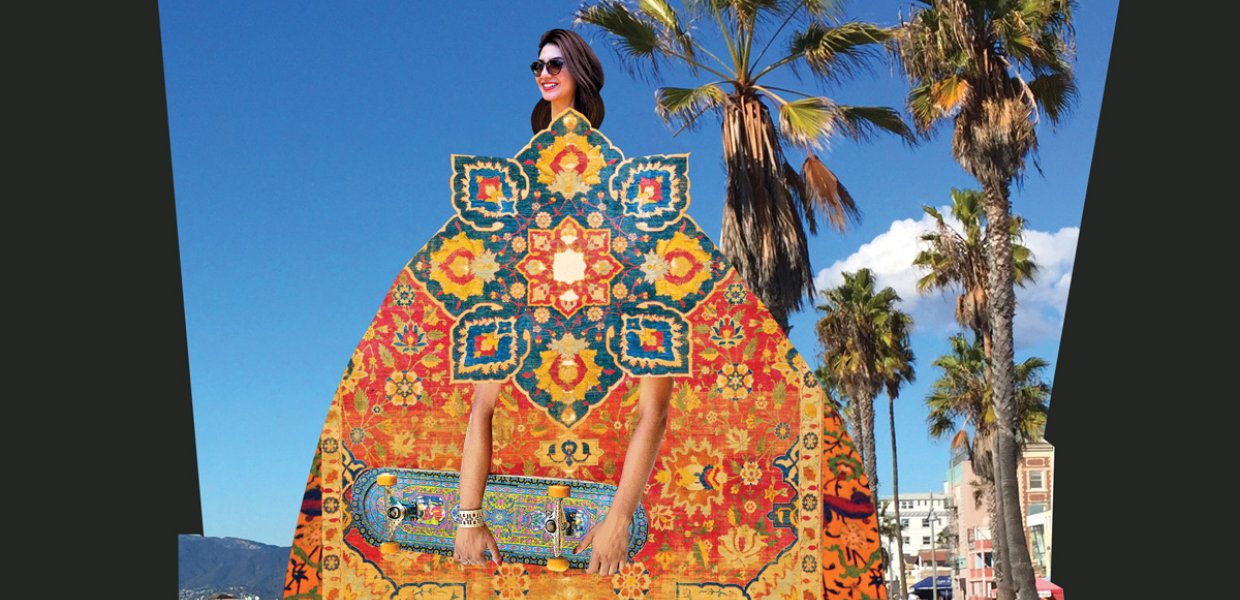An exploration of culture and identity through a fusion of skateboards with traditional Iranian art.
Art has the ability to transcend national borders and language barriers, giving it a unique power to generate empathy. Any piece of art has this power, whether it be a painting, a sculpture, a photograph — or a skateboard deck.
While I was earning my master’s in public diplomacy, I took professor Nicholas Cull’s “Cultural Diplomacy” course. Before this, it had never occurred to me that art and culture could be a framework for diplomacy. Over the course of the two-year program, I wrote a few pieces about the role of film in cultural diplomacy, and the idea of combining these two concepts stayed with me long after I graduated.
I have a very personal stake in improving cultural understanding between two countries: my home country, the United States, and my parents’ homeland, Iran. Born in Santa Monica, I spent most of my childhood in Palm Beach, Florida, before moving with my family to Iran when I was 11. Having lived in these two countries, with their difficult mutual history, I feel I have a responsibility to show others that there is more to Iran than its current role in the balance of power in the Middle East. Its rich art and culture are a great introduction to gaining a nuanced understanding of the country.
The way I went about doing this was through skateboard decks. Having lived in the birthplace of skate culture — and dodged so many skateboards on my walks through campus — I wanted to juxtapose this iconic beach-lifestyle object with art inspired by my Iranian background. I was drawn to the influence of skate culture and its roots as a counterculture activity that appeals to social “outsiders,” and also to the status skateboards can have as coveted contemporary art pieces.
I first started down this road by looking for skateboard art that I could hang on the walls of my new apartment, but didn’t find anything that suited my aesthetic. I was also interested in showcasing art from my Iranian roots, and ended up having a few custom-made pieces designed — which were unlike any other on the market. I received such incredible feedback from friends, family and social media that I decided to turn this concept into a business. I chose the name Eclectic Decks, dedicating the company to the exchange of different cultures through the creation of art pieces that broaden our collective understanding and promote cross-cultural dialogue.
My first collection for Eclectic Decks took its inspiration from traditional Persian tilework; one design specifically came from the Qajar era, with its distinct color palette of yellows, pinks and blues. The designs were screen-printed onto the skateboard decks in Los Angeles, combining my two cultures in a very real way.
I then decided to take the craftsmanship a step further and traveled to Isfahan, in central Iran. I commissioned one of the best artisans there to create Persian marquetry, also known as khatamkari, onto blank skateboard decks made in Southern California. This elaborate process required the artist to fill each centimeter of space with as many as 250 pieces of metal, bone, ivory and wood, laid side by side and glued together in stages. The screen-print editions can be used as actual skateboards; these handmade khatamkari pieces, while also completely functional, are meant to be appreciated as art.
Eclectic Decks has taken me on a surreal cross-cultural journey from a skateboard factory in Southern California to artisan workshops in the narrow alleys behind the Naqsh-e Jahan Square in Isfahan. I hope that this harmonious fusion of traditional Iranian artwork with such a quintessentially American object will inspire others to “shred” their way to cross-cultural journeys of their own.
Leila Nazarian graduated in 2013 with a master’s in public diplomacy.
